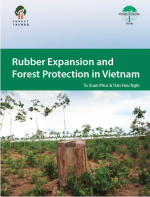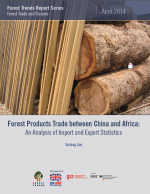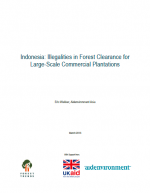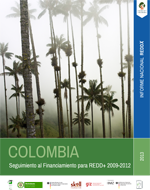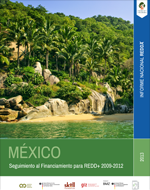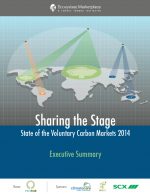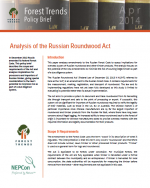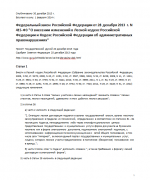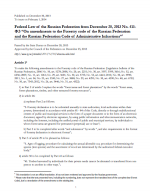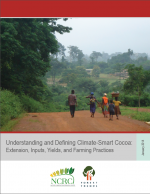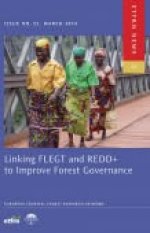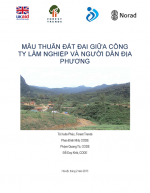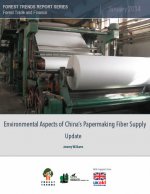Rubber Expansion and Forest Protection in Vietnam
By Phuc Xuan To, Huu Tran Nghi - Forest TrendsThis report provides in-depth analyses of the impacts of the expansion of rubber plantations in Vietnam, particularly in the Central Highland and Northwest Regions, which have experienced the most rapid rubber expansion in terms of area. The report also highlights the impacts of rubber plantation development on forest resources, household livelihoods, and local communities, as […]
Forest Products Trade between China and Africa
An Analysis of Import and Export Statistics
By Xiufang SunChina’s efforts to secure access to natural resources in Africa suggest that timber has already become an important traded commodity between China and the African continent. Many hold a general impression that Africa exports a significant and growing amount of timber to China. However, the true magnitude of the China-Africa forest product trade and its […]
Indonesia: Illegalities in Forest Clearance in Large-Scale Plantations
By Eric Wakker - Aidenvironment AsiaThis is the second in a series of case studies examining the nature, scale and extent of illegalities and irregularities in the process of forest clearance for large-scale agricultural estates and ranchlands, and the scale of the trade in commodities grown or reared on land illegally cleared of forests. Each country assessment examines the state […]
Email Signup
Subscribe to any of Forest Trends’ mailing lists to keep up with the news, publications, and events that interest you.
Having Trouble?
If you experience any technical difficulties on our site, please contact Genevieve Bennett, Communications Manager.
COLOMBIA: Seguimiento a la Financiación de REDD+ 2009-2012
Colombia es uno de los países con mayor biodiversidad en el mundo, donde el 53% de su territorio se encuentra cubierto por bosques tropicales, los cuales constituyen un 6.42% de la oferta total de cobertura boscosa tropical para Suramérica tropical y el 1.5% de los bosques del mundo. Sin embargo, las diferentes dinámicas de desarrollo […]
MÉXICO: Seguimiento del Financiamiento para REDD+ 2009-2012
México cuenta con 64.8 millones de hectáreas de bosques y selvas, aproximadamente un tercio de la superficie total del país.En México, REDD+ es sinónimo de desarrollo rural sustentable, un enfoque que permite alinear los incentivos del sector forestal con los de otros sectores que inciden en el mismo territorio (e.g. agropecuario, turismo).Actualmente, la Estrategia Nacional […]
State of the Voluntary Carbon Markets 2014
Sharing the Stage
By Molly Peters-Stanley, Gloria Gonzalez28 May 2014 | Washington, D.C. | In a bid to reduce their impact on greenhouse gas emissions, corporate leaders like Chevrolet, Marks & Spencer, and Allianz continued to voluntarily purchase carbon offsets in 2013, locking 76 million metric tonnes of greenhouse gases out of the atmosphere, according to the annual State of the Voluntary Carbon […]
Analysis of Russian Roundwood Act
In December 2013 Russia amended its federal Forest Code. This policy brief describes the scope and requirements of the Act and analyzes implications for processors and importers of Russian timber, giving special consideration to the law’s potential to minimize risk as part of a due diligence system.
Dependent Documents
Understanding and Defining Climate-Smart Cocoa
Extension, Inputs, Yields, and Farming Practices
By Rebecca Ashley Asare, Nature Conservation Research Centre - Forest TrendsGhana has identified its extensive cocoa cultivation as a major driver of deforestation and forest degradation. The Ghana Cocoa Board is committed to making Ghana the number one best quality producer of cocoa in the world, improving sustainability through a Climate-Smart Cocoa (CSC) approach that includes mitigation, increases in yield, and economic development that centers […]
Conflicts in Vietnam’s Forest Areas: Implications for FLEGT and REDD+
ETFRN News 55: March 2014
By Phuc Xuan To, Thomas Sikor - Forest Trends, University of East AngliaConflicts over land are rampant in Vietnam. Land conflicts are the subject of more than 70% of the written complaints received by Vietnamese government offices in recent years and could undermine Vietnam’s initiatives on Forest Law Enforcement, Governance and Trade (FLEGT) and Reducing Emissions from Deforestation and Degradation (REDD+). However, these initiatives also present an […]
Dependent Documents
Environmental Aspects of China’s Papermaking Fiber Supply – Update
By Jeremy Williams - ArborVitae Environmental Services Ltd.In 2007, Forest Trends commissioned Brian Stafford of Brian Stafford & Associates Pty Ltd to provide an analysis of China’s paper making industry’s fiber supply. At that time, China accounted for over 50 percent of the world’s overall growth in paper and paperboard production. It was deemed important to understand the structure of all of […]

